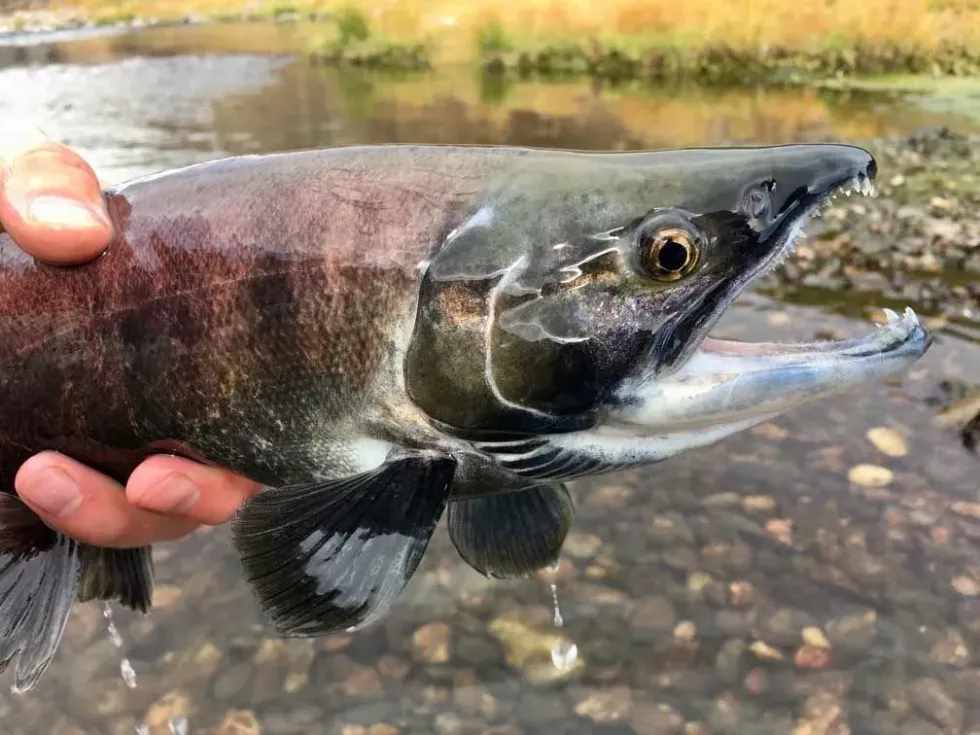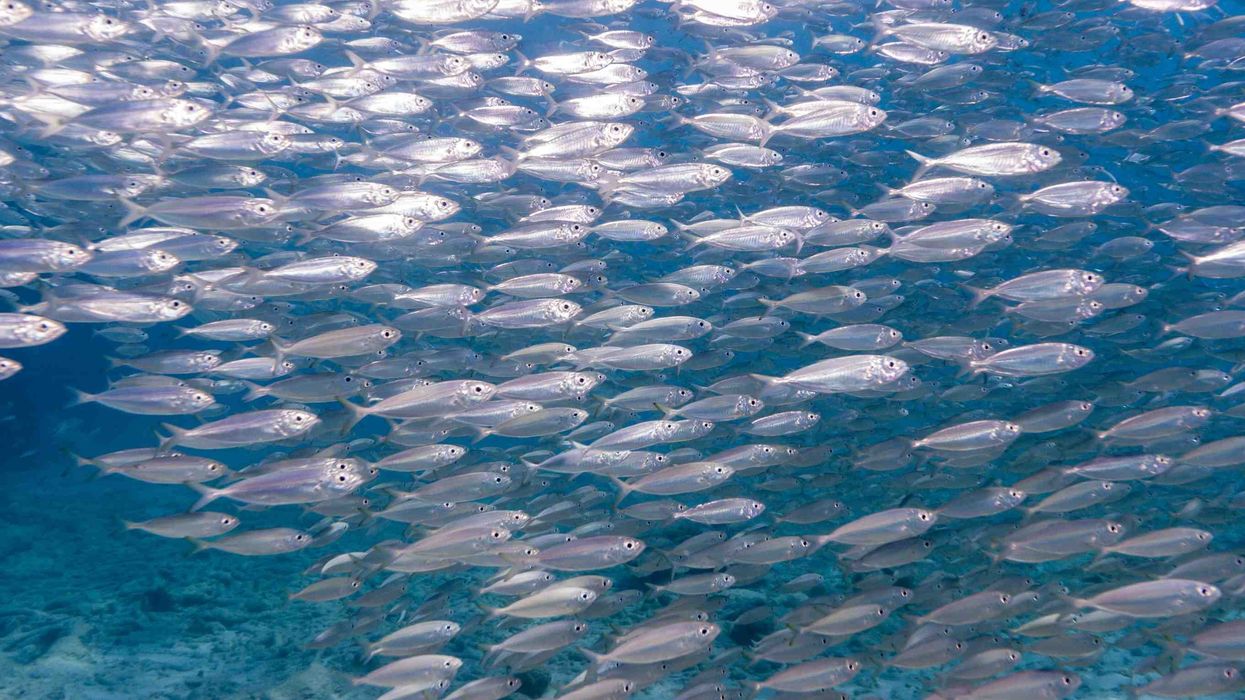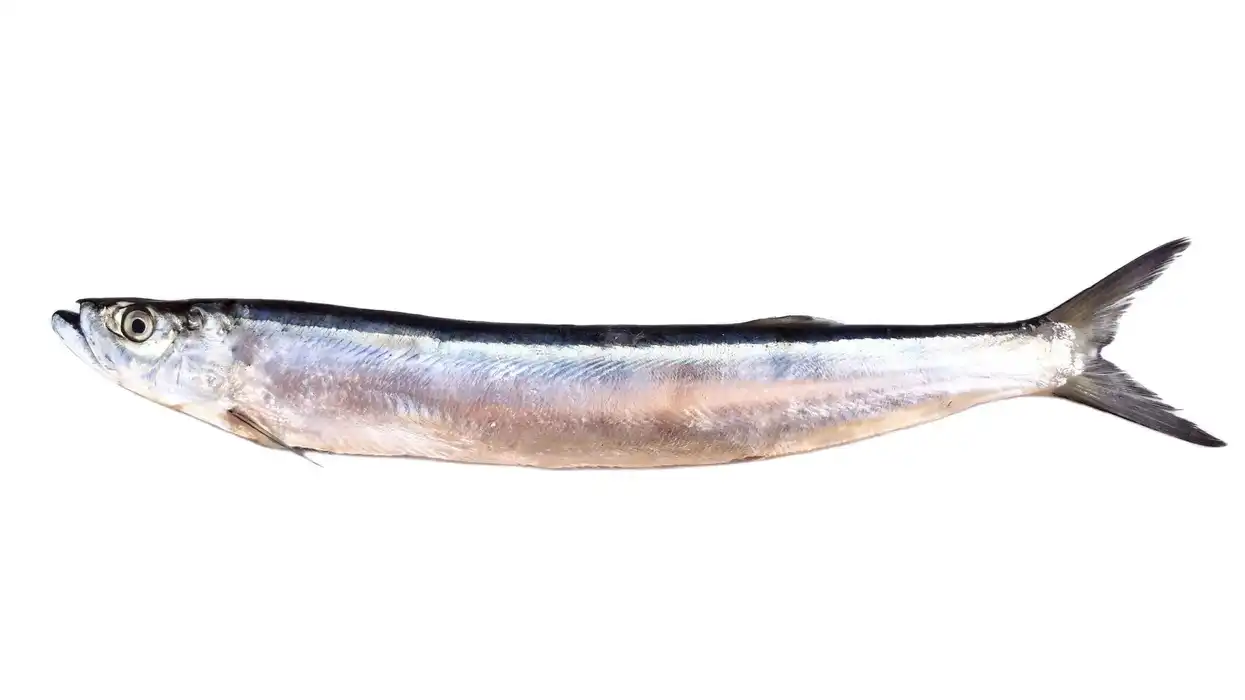Kokanee salmon, also known as kokanee trout, silver trout, and sockeye salmon, have an interesting life cycle. Starting from their unique color that changes during spawning season, to their disheartening death right after giving birth, they are full of interesting facts.
This fish has different names and this is associated with their changing body color.
Their changing color can be considered to be a very important factor when identifying kokanee salmon. Also, this color change has a specific purpose as it helps them attract their counterparts when it is time to spawn.
While sockeye salmon migrate to the ocean during their growth years, kokanee salmon remain in the same place and this is how you can distinguish between the two. Kokanee salmon are also known as landlocked fish.
This type of fish grows very fast and they can grow 10 in (25.4 cm) within the span of a year.
They also have a very particular routine when it comes to feeding time. During dusk and dawn, they come up to the surface of the water and feed upon zooplankton available on the surface.
Keep on reading to learn more facts about this interesting, color-changing fish. If you like to learn about other animals from around the world, then don't forget to check out our articles on king salmon and sockeye salmon.
Kokanee Salmon Interesting Facts
What type of animal is a kokanee salmon?
Kokanee salmon (Oncorhynchus nerka) is a species of sockeye salmon that lives in freshwater. While sockeye salmon migrate to the ocean during their growth years, kokanee salmon choose to remain in open water rivers. Many streams and lakes in British Columbia are home to both sockeye salmon and kokanee salmon.
What sets kokanee salmon apart from the other species of salmon is the way their body color changes during the different phases of their life. Usually, this fish is blueish silver in color. However, during spawning season, their color turns into a bright red. This also gives them their other name of red salmon.
What class of animal does a kokanee salmon belong to?
Kokanee salmon is a species of salmon belonging to the Actinopterygii class. It falls under the phylum Chordata and the order Salmoniformes.
How many kokanee salmon are there in the world?
The exact number of this fish is not known. However, they are widespread and can be found in abundance. They are more specifically found in Utah and British Columbia. Their abundance is observed in British Columbia lakes and streams. Both kokanee salmon and sockeye salmon can be found in the river, lakes, and streams in British Columbia and Utah.
Although it is not normally illegal to catch this fish, during spawning season, it does become illegal to catch kokanee salmon. During other times of the year, there is a certain limit on how many kokanee salmon can be caught.
Where does a kokanee salmon live?
Although this fish can be abundantly found around the world, they are native to North America. Kokanee salmon are mainly found in the lakes and rivers of Utah, British Columbia, and Washington. There are now populations of kokanee salmon in parts of South America.
During the '60s NC Wildlife Resources Commission started stocking this fish in the Nantahala lake. The reason behind this stocking was to develop this species of fish in order to feed other predator fish in the lake. Slowly but steadily kokanee salmon became a popular choice among the fishing community, especially to fishers who use the angular fishing technique.
What is a kokanee salmon's habitat?
Unlike other species of salmon fish, kokanee salmon neither live in the ocean nor do they migrate during their years of maturity. This type of fish live in the river throughout their entire life cycle. The species of kokanee salmon that does migrate to the ocean during their growth years is known as the sockeye salmon.
Who does kokanee salmon live with?
Similar to many other species of fish, kokanee salmon live within a group which is called a 'school'.
How long does a kokanee salmon live?
The average lifespan of this fish varies somewhere between two to seven years.
How do they reproduce?
This fish matures at around four years of age. Kokanee salmon spawning season takes place during the months of November to December. After spawning, the eggs take around 110 days to hatch. Right after spawning, the adults die.
At the start of mating season, females start digging and use gravel to create a nest to lay the eggs. This nest is known as a 'redd'.
After the females lay their eggs, a male fish fertilizes the eggs and then helps the female to bury them under the pebbles to protect the eggs from other predators in the river, such as trout.
Females often spawn with more than one male and dig up several redds to bury their eggs. Although it seems like these fish completely bury their eggs after spawning, in reality, there remains plenty of space for water to pass.
Soon after the spawning takes place, both the male and female fish die. While males live up to 10 to 14 days after the spawn, the females only live for three to five days, leaving the newly born fish all on their own.
What is their conservation status?
According to the International Union for Conservation of Nature (IUCN) red list, kokanee salmon comes under the Least Concern category. This means kokanee salmon fishing is not illegal yet.
However, in some places, there are limitations placed on how many kokanee salmon can be caught at a given time. Also, using kokanee salmon bait is a common practice for other predators in lakes and rivers.
Kokanee Salmon Fun Facts
What do kokanee salmon look like?
Kokanee salmon, also known as silver trout, land-locked sockeye, and redfish, are among some of the most beautiful-looking salmons. There are several reasons as to why this type of salmon has so many unique names.
They have a trout-like body along with scales that are mostly silver blueish in color. Due to their body color, this fish goes by the name of silver trout.
However, this color does not remain a constant throughout the entire kokanee salmon life cycle. During spawning months, their color changes to a bright red which gives them another name, redfish.
They have small eyes and small teeth which for the most part of their life are weak, however, during spawning season, male kokanee salmon develop stronger teeth. Males go through quite a few other changes during the spawning season.
For instance, they develop a hooked jaw whi is also known as 'kype'. They also develop a hump behind their back.

How cute are they?
As far as their appearance is concerned, this fish looks really cute, whether it be their blueish silver-colored scales before spawning or their bright red scales during spawning season. Although some might find their mouth a bit odd when it is compared to their gorgeous colored body.
How do they communicate?
Similar to other fish in the river, kokanee salmon use chemical signals to communicate.
How big is a kokanee salmon?
A typical kokanee salmon size is average and is quite small compared to their counterparts living in the ocean. This species of fish are almost two and half times smaller than the king salmon, which is believed to be the largest salmon.
King salmon can grow up to 58 in (147.32 cm) in length, whereas kokanee salmon can grow up to 9-24.8 in (22.6-63 cm) long.
How fast can a kokanee salmon swim?
The exact speed of this land-locked salmon is not known. However, sockeye salmon can swim at a speed of 1.1 mph (1.7 kph). They swim at an incredible speed which works in their favor during their migration from the lake or river to the ocean.
How much does a kokanee salmon weigh?
A kokanee salmon has an average weight compared to other types of salmon. They can grow up to 2.2-8.8 lb (1-4 kg).
What are their male and female names of the species?
The males and females of this species do not have separate names. Both are called kokanee salmon.
What would you call a baby kokanee salmon?
A baby kokanee salmon does not have a specific name but since it is fish, it is called a 'fry'.
What do they eat?
Kokanee salmon are carnivores. Their main diet consists of zooplankton which is a type of heterotrophic plankton. More precisely, they feed upon fresh-water shrimp, insects, small fish, and trout.
Are they eaten by humans?
Kokanee salmon taste really good, especially right before they enter spawning season. Many fishers who use the angular fishing technique have their eyes placed on this fish as they really want to catch kokanee salmon to eat.
Among many kokanee salmon recipes, the most common and the easiest ones to make include the fillets.
These predators also act as food for other predators. NC Wildlife Resources Commission started stocking this fish in the Nantahala lake in the '60s. They were used to feed other predator fish in the lake and even used as bait for fish living in the river.
Would they make a good pet?
Despite their unique appearance, this type of fish might not be the ideal choice for a pet. They are used to a comparatively deep-water habitat of around 10-40 ft (3-12 m) which is quite difficult to arrange in a fish tank!
Did you know...
During spawning season, a male fish performs a dance to prevent the female from spawning with others. Males also fight with other males and perform a courtship dance to win the heart of a female salmon, while she prepares a nest for the spawn.
What is the difference between kokanee and sockeye?
As far as the appearance of these two fish is concerned, both are more or less the same. However, the only thing that sets the two apart is that sockeye salmon migrate to the ocean during their growth years, while kokanee salmon remain in the same river. This is why kokanee salmon are called land-locked salmon.
How long before baby kokanee salmon move into open water?
Since both parents die right after spawning season, the spawn pretty much grow up on their own. They spend almost a month in the gravel before moving to open water.
Here at Kidadl, we have carefully created lots of interesting family-friendly animal facts for everyone to discover! Learn more about some other fish including frilled shark, or basking shark.
You can even occupy yourself at home by drawing one on our kokanee salmon coloring pages.










